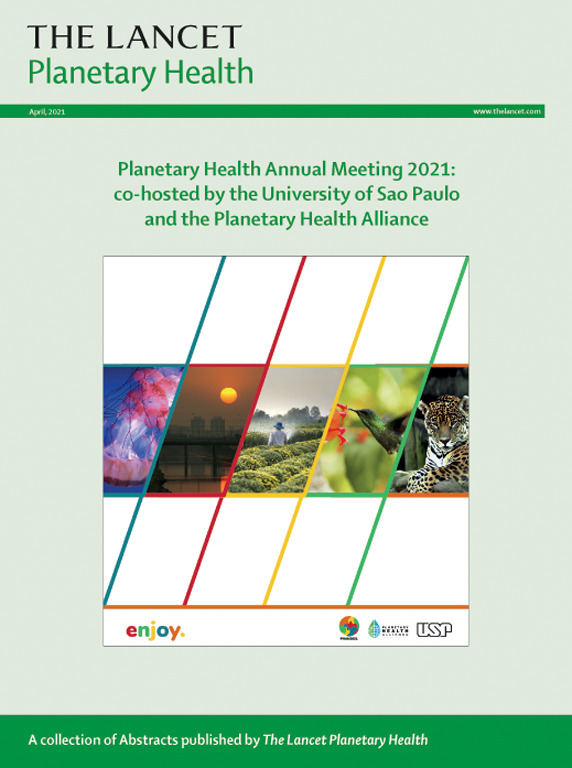The differential effect of ambient temperature on age-specific and sex-specific mortality in the 300 largest cities of Russia, 2000–19: a first national time-series study
IF 21.6
1区 医学
Q1 ENVIRONMENTAL SCIENCES
引用次数: 0
Abstract
Background
Despite a substantial body of evidence on the association between ambient temperature and mortality worldwide, there has not yet been a comprehensive country-wide assessment of the health effects of temperature in Russia. Moreover, there is no consensus on the effect of non-optimal temperatures on age-specific and sex-specific mortality. Our study aimed to provide the first analysis of temperature-related mortality in a large assembly of cities located in different geographical and socioeconomic zones of Russia.
Methods
We analysed 19 044 538 non-accidental deaths in the 300 most populated cities in Russia between 2000 and 2019. A two-stage analysis strategy was used. First, a quasi-Poisson time-series model with distributed lag non-linear model was fitted to estimate city-specific associations. Second, these associations were pooled with multivariate multilevel meta-regression, from which we also calculated temperature-attributable mortality.
Findings
Relative risks were generally higher for cold than for heat, except for cities in southern European Russia. Cold had a similar effect in both sexes, with a varying age gradient across cities. Although the effect of heat was generally stronger in women than in men, with the relative risk increasing steadily with age in both sexes, men younger than 60 years had a significantly higher risk of dying from heat than women of the same age. With a total of 106 007 (95% empirical CI [eCI]: 88 942–121 318) temperature-attributable deaths, there was a higher mortality attributable fraction for cold (10·74%, 95% eCI 8·80–11·99) than for heat (0·67%, 0·42–0·88).
Interpretation
Russia has a high temperature-related mortality burden, with large differences in risk between cities and subpopulations. This information should be taken into account when planning public health interventions.
Funding
European Research Council, National Health and Medical Research Council, and Australian Research Council.
2000 - 2019年俄罗斯300个最大城市中环境温度对年龄和性别死亡率的差异影响:第一个国家时间序列研究
背景:尽管有大量证据表明世界范围内环境温度与死亡率之间存在关联,但在俄罗斯尚未对温度对健康的影响进行全面的全国性评估。此外,关于非最佳温度对年龄和性别死亡率的影响尚无共识。我们的研究旨在首次分析俄罗斯不同地理和社会经济区域的大型城市中与温度相关的死亡率。方法分析了2000年至2019年俄罗斯300个人口最多城市的19044538例非意外死亡病例。采用两阶段分析策略。首先,拟合了一个具有分布滞后非线性模型的准泊松时间序列模型来估计城市特异性关联。其次,将这些关联与多变量多水平元回归进行汇总,并从中计算温度归因死亡率。研究发现,除了俄罗斯南欧的城市外,寒冷的相对风险普遍高于炎热。寒冷对男女都有类似的影响,不同城市的年龄梯度不同。尽管高温对女性的影响通常比男性更大,而且相对风险随着年龄的增长而稳步增加,但60岁以下的男性死于高温的风险明显高于同年龄的女性。在106 007例(95%经验CI [eCI]: 88 942 ~ 121 318)温度归因死亡中,低温的死亡率归因分数(10.74%,95%经验CI [eCI]: 8.80 ~ 11.99)高于热(0.67%,0.42 ~ 0.88)。俄罗斯有高温相关的死亡率负担,城市和亚人群之间的风险差异很大。在规划公共卫生干预措施时应考虑到这一信息。资助欧洲研究委员会、国家卫生和医学研究委员会和澳大利亚研究委员会。
本文章由计算机程序翻译,如有差异,请以英文原文为准。
求助全文
约1分钟内获得全文
求助全文
来源期刊

Lancet Planetary Health
Multiple-
CiteScore
28.40
自引率
2.30%
发文量
272
审稿时长
8 weeks
期刊介绍:
The Lancet Planetary Health is a gold Open Access journal dedicated to investigating and addressing the multifaceted determinants of healthy human civilizations and their impact on natural systems. Positioned as a key player in sustainable development, the journal covers a broad, interdisciplinary scope, encompassing areas such as poverty, nutrition, gender equity, water and sanitation, energy, economic growth, industrialization, inequality, urbanization, human consumption and production, climate change, ocean health, land use, peace, and justice.
With a commitment to publishing high-quality research, comment, and correspondence, it aims to be the leading journal for sustainable development in the face of unprecedented dangers and threats.
 求助内容:
求助内容: 应助结果提醒方式:
应助结果提醒方式:


